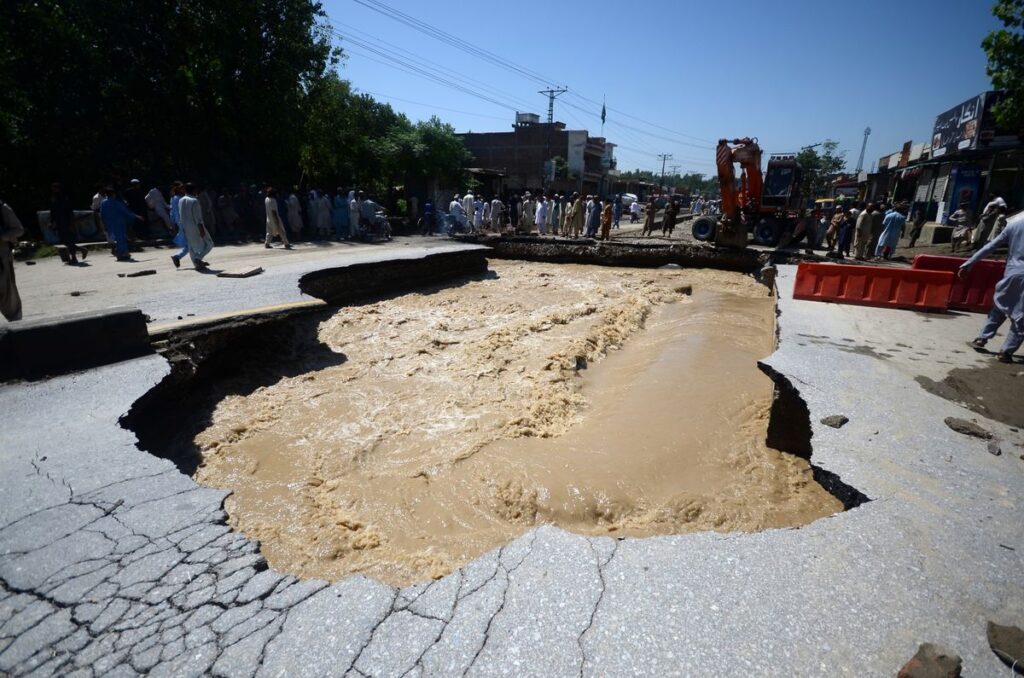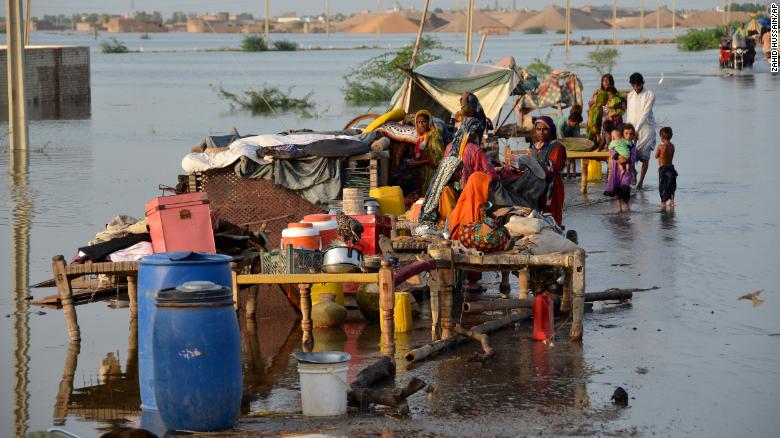More than 1,100 people have been killed and 33 million others impacted in one of the country’s worst monsoon seasons in over a decade.
“The Pakistani people are facing a monsoon on steroids — the relentless impact of epochal levels of rain and flooding,” Guterres said during the appeal’s launch.
“As we continue to see more and more extreme weather events around the world, it is outrageous that climate action is being put on the back burner as global emissions of greenhouse gases are still rising, putting all of us — everywhere — in growing danger,” he said.
UN Secretary-General António Guterres warned that the world is “sleepwalking” into environmental destruction, as he launched a flash $160 million appeal for flood-ravaged Pakistan.
“Let’s stop sleepwalking towards the destruction of our planet by climate change,” Guterres, who is scheduled to travel to Pakistan on September 9 for a “solidarity visit,” said. “Today, it’s Pakistan. Tomorrow, it could be your country.”
Images of water gushing down streets, swallowing villages, and destroying bridges serve as a stark reminder of the inequities of the climate crisis, which impacts the developing world disproportionately. Richer countries also bear a much larger historical responsibility for the crisis in the first place.

Pakistan’s Prime Minister Shehbaz Sharif said the current flooding in Pakistan has been “the worst in the country’s history.”
In his first time speaking with international media since becoming prime minister in April, he warned that Pakistan was facing a food shortage due to the crop damage caused by the floods and that the price of tomatoes and onions had “skyrocketed.”
“Every penny of aid” sent to Pakistan “will reach the needy,” Sharif added.
At the same briefing, planning minister Ahsan Iqbal said that the global north should step up its responsibility to countries affected by climate change.
“All the quality of life that people are enjoying in the west, someone is paying the price in the developing world,” he said.
One-third of Pakistan has been completely submerged by historic flooding, its climate minister says.
Devastating flash floods have washed away roads, homes, and crops – leaving a trail of deadly havoc across Pakistan.

“It’s all one big ocean, there’s no dry land to pump the water out,” Sherry Rehman said, calling it a “crisis of unimaginable proportions.”
At least 1,136 people have died since the monsoon season began in June, according to officials.
The summer rain is the heaviest recorded in a decade and is blamed by the government on climate change.
One-third of Pakistan is underwater right now, which has exceeded every boundary, every norm we’ve seen in the past,” Ms. Rehman told AFP news agency.
“We’ve never seen anything like this,” the minister added.
Of those who are known to have died, 75 were in the past 24 hours alone, officials said, adding that the death toll is expected to rise.
Speaking to the BBC, Pakistan’s Foreign Minister Bilawal Bhutto-Zardari said one-third of those killed are believed to be children.
“We’re still coming to grips with the extent of the damage,” he added.

Officials estimate that more than 33 million Pakistanis – one in seven people – have been affected by the historic flooding.
Heavy waters in the country’s northern Swat Valley have swept away bridges and roads, cutting off entire villages.
Thousands of people living in the mountainous area have been ordered to evacuate – but even with the help of helicopters, authorities are still struggling to reach those who are trapped.
“Village after village has been wiped out. Millions of houses have been destroyed,” Prime Minister Shehbaz Sharif said on Sunday after flying over the area in a helicopter.
Those who managed to escape have been crowded into one of many makeshift camps across the country.
“Living here is miserable. Our self-respect is at stake,” flood victim Fazal Malik told AFP from a school that was being used to home some 2,500 evacuees in the north-western Khyber Pakhtunkhwa province.
Provinces like Sindh and Balochistan are the worst affected but mountainous regions in Khyber Pakhtunkhwa have also been badly hit.
Dramatic scenes of disaster have unfolded in Pakistan as floods inundated the country.
It was raining but not heavily, Ali Jan told Reuters, as he stood surrounded by water in Chadsadda in northern Pakistan. But that quickly changed.

“Suddenly the outer wall of the compound collapsed and water gushed in,” Jan said. “We barely managed to save ourselves. By the time the women were leaving the house, the water had become almost waist-deep. We evacuated the women and the cattle. The rest is there for you to see. Crops have also been destroyed.”
More than 3,000 volunteers from the NGO are distributing aid across the country, he said.
“We are getting aid but it’s not enough with what we need on the ground, because the damages are very much higher than expected,” he said, adding that volunteer teams have been stretched thin delivering supplies to hard-to-reach areas for weeks.
Source:
Agencies







1 Comment
[…] can Pakistan be flooded with water that has wiped out 30% of its capabilities and killed a large proportion of […]